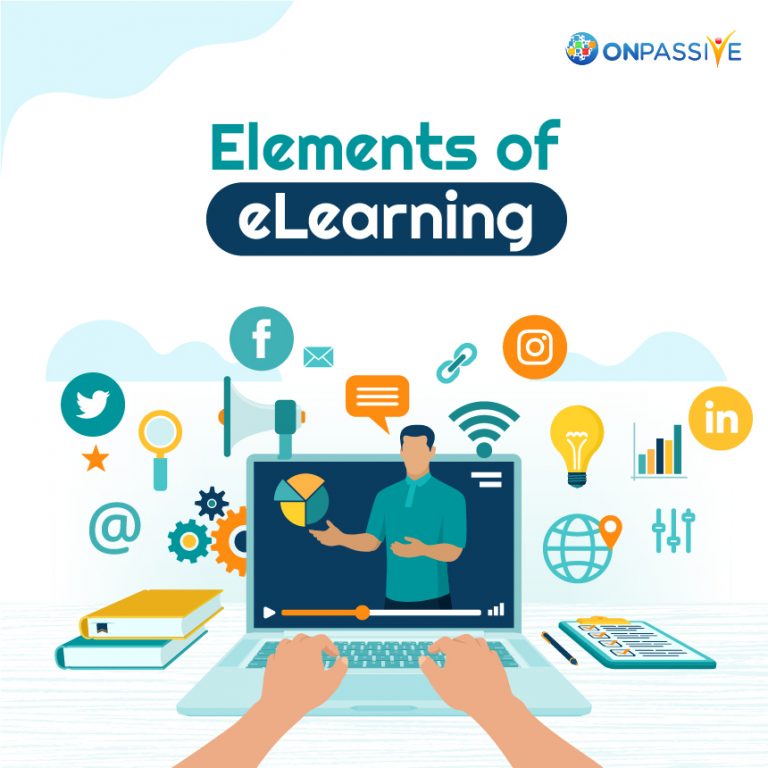
Why Corporate Training?
What makes a corporate organization successful? Well, there are many factors that decides the success rate of an organization. However, efficient employees are at their core. To make your employees efficient and reliable, you must invest in their training. Corporate training is essential for the following reasons:
- The well-trained employees feel they are a vital part of an organization and gear-up themselves for better performance
- It improves their customer service skills which drive business growth
- It prepares them to meet the changing market-requirements
- It facilitates utilization of development programs to make optimal use of employees
- It incorporates a sense of confidence among them
Thus, corporate/internal training is an essential stakeholder in the overall growth of a corporate organization.
eLearning and Corporate training
Learning enabled by the use of electronic technologies is called eLearning. It is usually facilitated over the learning management system (LMS), which is a self-paced module of learning.
Many corporations are opting for eLearning today as they are cost-effective modes of learning. It offers a platform for employees to communicate with instructors and seek the required knowledge.
Elements of eLearning?
ADDIE (Analysis, Design, Development, Implementation, and Evaluation) model is an instructional design model (ID) used along with SAM (Successive Approximation Model) to create self-paced eLearning modules.
What are the components of the ADDIE model?
Following are components that form the ADDIE model:
- Analysis: Its introductory stage of the model pertains to the understanding of the audience, their competence level, how is the learning environment, analyzing the content available etc.
- Design: Designing involves setting learning objectives based on performance, formulating instructional policy, determining various media components, deciding the level of interactivity and framing assessments.
- Development: It includes developing functional eLearning courses using authoring tools such as Captivate, Lectora or Storyline 360 compatible with various formats like AICC, Tin Can and SCORM etc.
- Implementation: It involves implementing an eLearning course on an LMS to be accessed by multiple uses. The LMS also keep track of learners’ progress, frame reports.
- Evaluation: Evaluation is carried in 5 stages- to get learner’s feedback, to analyze learning drawn from the course, to check the real-time application of the learning, what is the impact of learning on business performance, and ROI.
What is the Successive Approximation Model (SAM)?
The successive approximation model (SAM) is an alternative to ADDIE. It overcomes the flaws of the linear ADDIE model. It works in three phases: the preparation phase, design phase and development phase.
- Preparation phase: It includes information collection and Savvy Start. All the required information about the project is collected by the design team to offer a proper learning solution. Savvy Start is about reviewing the collected information and discussing them with the design team.
- Iterative design: After preparation, its a time for project planning and some additional design. The project development gets analyzed and confirmed by both parties. Then the design team design the functional prototype and send it to the intended stakeholders.
- Iterative development: Once the design is approved, the process is followed by four steps: design proof, alpha, beta and gold. The design proof is sent for review. Once approved, it is presented as an ‘alpha’ course and sent along with the audio script for review. The narrative in the form of audio is integrated on approval, and this ‘beta’ version is sent again for review. On final approval, the ‘gold’ version is hosted on LMS and made available for learners.
Concluding insights on eLearning
We have discussed the functional elements of eLearning. Now let us dive into the concluding insights on eLearning:
- Estimating the duration of an eLearning session help to calculate the cost and time to design the course. For example, you can set 1-1.5 minutes for each slide of the storyboard and then design a 20-slide storyboard. It will yield 20-30 minutes of an eLearning session.
- Developing the eLearning In-house or Outsource a critical question to address. You can design it according to your requirements. For example: if you have just begun your company, it is advisable to outsource the whole project.
- To find the right outsourcing vendor for eLearning, you need to consider these questions: are you dealing with the company that offers specialized services in eLearning? What’s track record do they have in corporate training? What kind of portfolio does the company have? How robust is their process of project management and design development?
- You can incorporate blended eLearning options such as mobile learning, micro-learning (of the duration of 5-15 minutes) and just-in-time learning.


